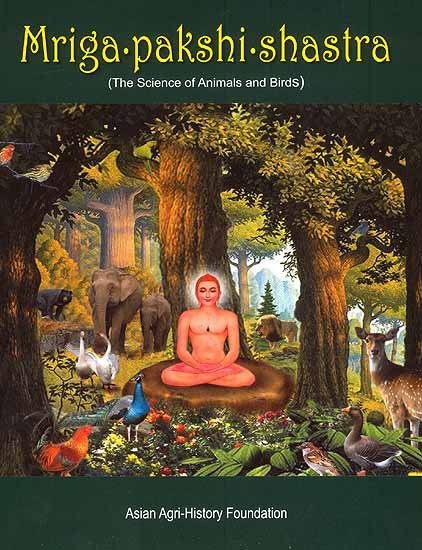Animal Kingdom (Tiryak) in Epics
by Saranya P.S | 2019 | 51,616 words | ISBN-10: 8190396315 | ISBN-13: 9788190396318
An English study the Animal Kingdom (Tiryak) in Epics.—The present thesis is based entirely on Ramayana and Mahabharata although an attempt is made to analytically compare the Animal kingdom with Mriga-pakshi-shastra—‘The ancient Indian science of of Animals and Birds’....
Chapter 5.3 - The story of Kadru (daughter of Daksha Prajapati)
Kadru is the daughter of Daksha Prajapati and the wife of Kashyapa. According to the Mahabharata, Kashyapa was born as the son of Marici, the dear son of Brahma.
Kashyapa married 13 wives[1] who were the daughters of Daksha. They were:
But according to the Valmiki Ramayana, Kadru is the wife of Kashyapa and the daughter of Krodhavasha, who was the daughter of Daksha.[2]
Not only that, Vinata, who is supposed to be the elder sister of Kadru, is also the wife of Kashyapa and the daughter of the grand daughter of Tamra, the daughter of Daksha. That means from Tamra was born Shuki, from Shuki came Nata and from Nata was born Vinata.
Vinata’s grandmother’s mother Tamra and Krodhavasha, the mother of Kadru, were sisters. Anyhow both of them looked after Kashyapa like good sisters. From this there arises a question as to whether Kadru was Kashyapa’s wife or his daughter. The answer to this question is still unavailable.
Kashyapa was happy with the services he was getting from Kadru and Vinata. He therefore asked them to ask for a boon, a blessing. Kadru said she wanted 1000 nagas as her sons. Vinata wanted her sons to be stronger and more courageous than those of Kadru. As requested by them Kadru got 1000 nagas as her children. Vinata got Garuda and Aruna as her sons.[3]
It is from the nagas born to Kadru that all the nagas we see today have come. The more important sons[4] of Kadru are: Shesha, Vasuki, Iravata, Takshaka, Karkotaka Dhananjaya, Kaliya, Maninaga, Apurananaga, Pinjaka, Elaputa, Vamana, Shankha, Valishikha, Nishtanaka, Hemaguha, Nagusha Pingala, Bahyakarna, Hastipada, Kambala, Mulgarapindaka, Ashvathara, Kalika, Vrittan, Samvrittaka, Patha, Shankhamukha, Kushmandaka, Kshemaka, Vilyaka, Pindaraka, Karavira, Mushakada, Pushpadamshtra, Bilyapandura, Shankhashirav, Purnabhadra, Haridraka, Aparajitan, Pannagan, Jyotika, Shrivahan, Kauravya, Dhritarashtra, Subahu, Birajas, Shankhapinda, Shalipinda, Hastipinda, Pidharaka, Sumukha, Kaunapasana, Kumran Kunjara, Prabhakara, Kukkuta, Kumudaksha, Tittiri, Halika, Bahumulaka, Karddama, Karkara, Akarkara, Kundodara, Mahodara.
In the competition between Kadru and Vinata, Kadru wanted to prove that the tail of the Ucchaishravas was black. So she asked her sons to hang on to the tail of Ucchaishravas so that it might appear black. But some of her sons refused to do it because they thought it was unfair. Kadru cursed those who disobeyed her saying that they will be burned in Janamejeya’s sarpasatra. There was a Brahma decree that harmful nagas be given this kind of curse. Brahma also advised Kashyapa about the ‘vishasamharavidya’ to nullify the effect of the poison.[5]
In the Adiparva we read how Vinata and Garuda carry Kadru and the nagas to the island called Ramaniyakam to dwell there[6].
Footnotes and references:
[1]:
Mahabharata .Adi.65
[2]:
Valmiki Ramayana 6.14
[3]:
Mahabharata .Adi.16
[4]:
Ibid. 35
[5]:
Ibid. 20
[6]:
Mahabharata .Adi. 25.26
